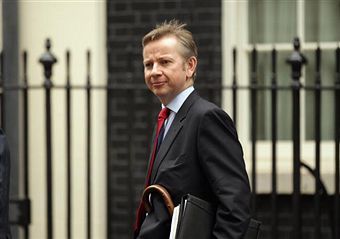 Free schools are all well and good – but what about the schools that remain? Some
CoffeeHousers raise this question in response to my earlier blog, and it’s important enough to deserve
a post in itself. Because introducing new schools to compete with council schools is the best way of raising standards for all – and studies around the world prove this. The ‘free
schools’ agenda is not some Govian brainwave, but a simple reform that is being enacted from Chile to Obama’s charter schools. The fullest example of this has been in Sweden, which the Gove
system is modelled on, where about 13 percent of upper secondary kids are now in free schools. Crucially, one does not have to rely on a theory of what-ifs and scare stories from the unions; we now
have over a decade’s worth of data and academic studies which show that the system works for ALL schools.
Free schools are all well and good – but what about the schools that remain? Some
CoffeeHousers raise this question in response to my earlier blog, and it’s important enough to deserve
a post in itself. Because introducing new schools to compete with council schools is the best way of raising standards for all – and studies around the world prove this. The ‘free
schools’ agenda is not some Govian brainwave, but a simple reform that is being enacted from Chile to Obama’s charter schools. The fullest example of this has been in Sweden, which the Gove
system is modelled on, where about 13 percent of upper secondary kids are now in free schools. Crucially, one does not have to rely on a theory of what-ifs and scare stories from the unions; we now
have over a decade’s worth of data and academic studies which show that the system works for ALL schools.
The Swedish experiment showed that a free school competing with local schools drove up standards in the other council-run schools. Money follows the pupils. The councils see, for the first time,
that if they don’t satisfy parents they will lose their custom. This focuses their attention and has had a galvanising effect on Swedish education. A rising tide has lifted all boats.
After ten years of free schools in Sweden, Mikael Sandstrom, now a state secretary in the Swedish government, conducted a massive academic study
into the policy’s success, using a data set of about 28,000 pupils in about 250 council areas. First, Sandstrom’s study shows that free schools were set up where the quality of local
schools was below average – i.e. where the demand was greatest. We should not be surprised by this, but it counters CoffeeHouser Braveheart’s suggestion that only middle-class parents and religious groups will set up
schools (the work will likely not be done by Toby Young et al, but by the new breed of popular school chains – ARK and Harris to name but two). Richer parents play the current system
anyway. They buy a house in a posh area and get a pretty good state school, whilst the wealthiest 7 percent take their kids private.
The demand for school choice is among those parents who cannot afford to move to a posh catchment area, and are desperate for their child to do better than the local sink school. Few forces on
earth are more powerful than the desire of a parent to do well by their child. The ‘free school’ system will be powered by this force – not by government control. For all too many
kids, they represent a route out of the ghetto in the way the old grammar schools did.
Sandstrom’s study also shows that the surrounding council schools improved in direct proportion to the competition. Increasing the percentage of kids educated in a free school by 1 percent
produced an improvement in results of all kids equivalent to a 5 percent increase in funding (pg.32).
There comes, in the vernacular, a tipping point. All you need is enough free schools (I’d say about 12 percent nationally) where pupils genuinely have a choice. When they do, and parents are
able to flee underperforming schools, the others raise their game markedly – and more sharply than they would with less money. An ideal policy for the austerity era. Incidentally, councils in
Sweden often complain about more competition from free schools – saying “please, no more misery, we’ve lost enough pupils already”. The Swedish left has no problem saying
“well, your schools must be pretty bad then – we’re on the side of the parent” because both free and council schools are in the state system. Therefore, the sectarian
language we hear in Britain about “opting out” just doesn’t make sense: it will all be in the state system.
So Rhoda Klapp et al, this is Gove’s idea. It is emphatically not for a minority. The attainment gap in British private and public schools is the highest in Europe –
there’s plenty of scope to close this gap. We do education pretty well in England: it’s time to extend this excellence for all. The new ‘free schools’ or Academies will do
more than offer the poor the same choice as the rich now enjoy: they will be pacemakers, encouraging other neighbouring schools to improve faster than any central edict could manage. It really is
an education policy for all.
 Fraser Nelson
Fraser Nelson
Free schools: good for all schools






Comments